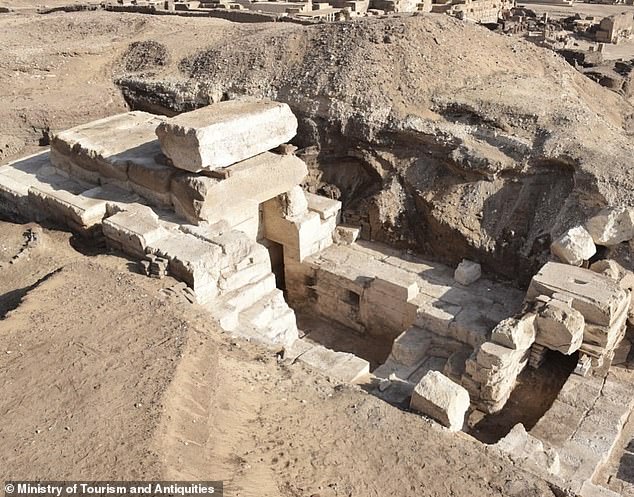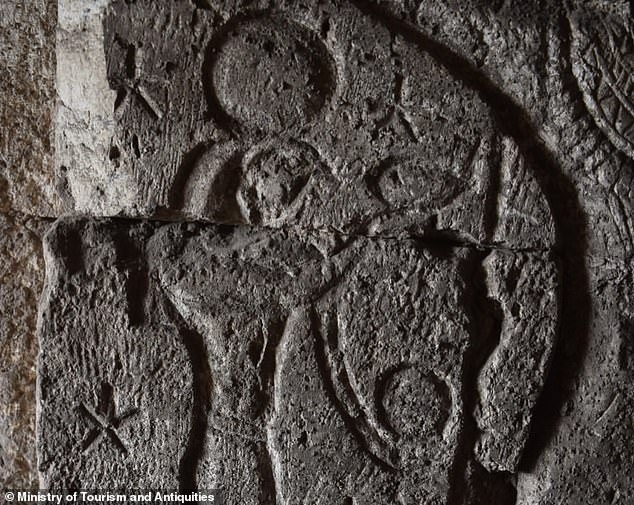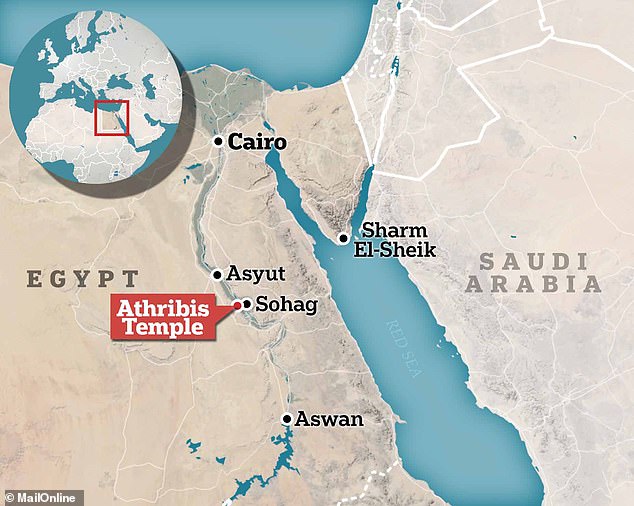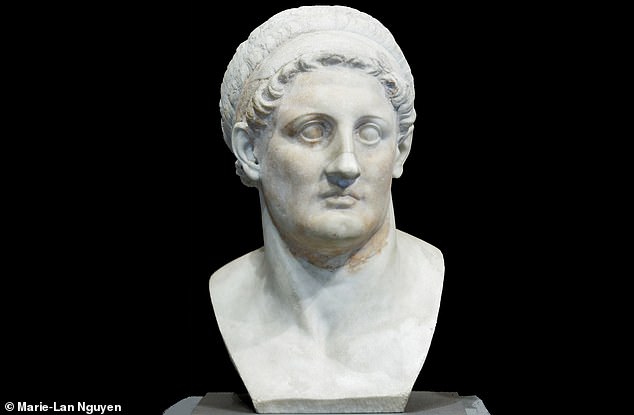Archaeologists have found a secretive entranceway on an Egyptian temple dating back around 2,100 years.
The gateway – on the western side of the historic Athribis site near Sohag, Egypt – originally stood up to 60 feet (18 meters) tall.
It’s a stunning example of an Egyptian ‘pylon’ – where two towers flank a main entrance.
The entrance leads to a previously unknown chamber, likely a storage room for utensils and amphora – large oval storage vessels with two handles.
What’s more, hieroglyphic inscriptions and intricate carvings adorn the outer façade and inner walls of the chamber.
The researchers are certain that the chamber leads to a temple, although further excavations will be needed to prove this.
Experts think the structure was built at Athribis – formerly a thriving Egyptian city – during 2nd century BC.
At the time, Egypt was ruled by the Ptolemaic dynasty, a royal house which controlled Ancient Egypt until its incorporation into the Roman Republic in 30 BC.


The entrance and chamber was uncovered by researchers from the University of Tübingen, supported by the Egyptian Ministry of Tourism and Antiquities.
Dr Mohamed Ismail Khaled, Secretary-General of the Supreme Council of Antiquities, described the discovery as ‘the first nucleus for unveiling the rest of the elements of the new temple at the site,’ according to Asharq Al-Awsat.
‘This finding is particularly significant as it marks the first step in uncovering the remaining elements of the temple,’ said Egypt’s Ministry of Tourism and Antiquities in a Facebook post.
The chamber, which is about 20 feet (6 metres) long and nine feet (3 metres) wide, has an entrance decorated with newly-found reliefs and hieroglyphic inscriptions.
The inscriptions depict Egyptian fertility god Min and his wife Repit, commonly depicted as a lioness, and their son, the child-god Kolanthes.
In one inscription, this Egyptian deities are receiving sacrifices from a king, who the researchers say is Ptolemy VIII from the 2nd century BC.
The researchers therefore think Athribis temple was built during the reign of Ptolemy VIII (who died in 116 BC) as centre of worship for the revered family.
The figures also also surrounded by structures of astronomical symbols acting like ‘celestial stars’ to measure the hours of the night.


Meanwhile, a second door on the façade of the pylon leads to a previously unknown staircase that ascended at least four flights to the upper floor, but has now been destroyed.
Further excavations at Athribis Temple will now focus on finding traces of the presumed temple that lies beyond the chamber, likely a place of sanctuary for the city’s inhabitants.
‘The mission will complete its work on site to fully uncover the rest of the temple during the coming quarry seasons,’ Ministry of Tourism and Antiquities said in its statement.
In its heyday, it’s thought the temple spanned 167 feet (51 meters) in width and had pylon towers, each up to 60 feet (18 meters) high.
Today, only about 16 feet (5 metres) remain of the towers, which fell victim to quarrying, likely in the 8th century AD.
Although Athribis was occupied during the later dynasties, the ancient Egyptian city didn’t gain real power until the early Ptolemaic Kingdom.
The Ptolemaic dynasty was Egypt’s last before it became part of the Roman Republic, which preceded the almighty Roman Empire.
The dynasty was founded in 305 BC after Alexander the Great of Macedonia took Egypt in 332 BC and one of his generals, Ptolemy, became Ptolemy I.


Leadership was handed down through Ptolemy’s descendants and ended with Cleopatra VII, one of the most famous queens in history.
Cleopatra VII, known both as a seductress with a captivating personality, used her charms to seduce Julius Caesar to cement Egypt’s alliance with Rome, and then to seduce his second in command, Mark Antony, who she married.
With the arrival of the future Roman emperor Augustus, Antony committed suicide in 30 BC under the false impression that she was dead.
After burying him, the 39-year-old Cleopatra took her own life, though how is uncertain.
The doomed couple are thought to have been interred together, although the whereabouts of their resting place is still a mystery.
